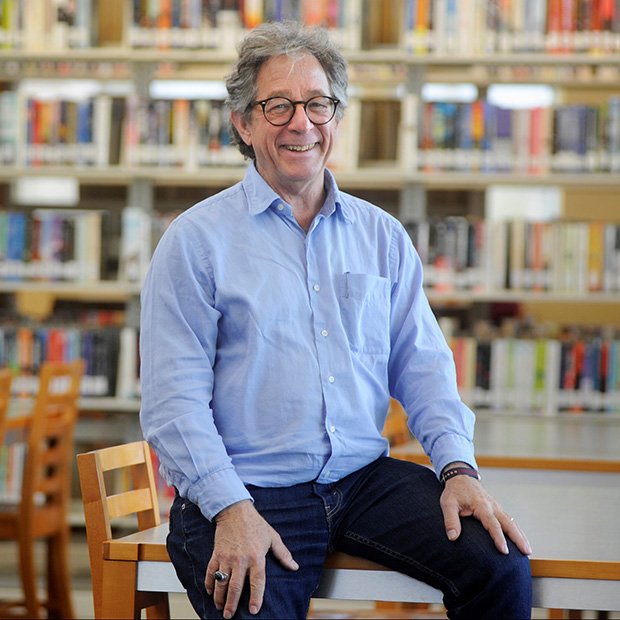Bringing history to life
 Jim Silverman ’72
Jim Silverman ’72
February 24, 2022 — Nestled in the heart of Sonoma County, the small city of Sonoma is best-known as a hub of Northern California’s wine-making region. Tourists flock here to tour vineyards, eat in world-class restaurants, and stay in quaint inns.
But retired librarian and history buff Jim Silverman ’72 wants visitors and residents to know that there’s more to Sonoma than its grapes. When the pandemic hit, he launched the Sonoma Plaza History project.
“This was a Mexican town with a traditional Mexican plaza designed 200 years ago, and though it’s a very historic place, there isn’t much vitality about history here,” he says.
The project is made up of three different all-volunteer efforts spearheaded by Silverman. The first is a GPS-guided walking tour of the plaza, with two-minute stories highlighting the history of the 19th century buildings, people, and even trees that live or once lived there. Written by local historian Arthur Dawson, the vignettes talk about the Chinese population, for example, that thrived but were driven out, and the Pomo, Coast Miwok, and Wappo people who resided in the area thousands of years ago.
The second project is a series of panels using old fire insurance maps of the plaza as background with photo portraits along the top, designed by local artist Michael Acker. They’ll eventually be printed on aluminum panels and sent on tour. The third project is called Women Who Shaped Sonoma Valley.
 A sample panel designed by artist Michael Acker uses a collage of portraits of the people who are most often left out of Sonoma’s history and old fire insurance maps of the Sonoma Plaza.
A sample panel designed by artist Michael Acker uses a collage of portraits of the people who are most often left out of Sonoma’s history and old fire insurance maps of the Sonoma Plaza.
“If you erase all the stuff men did, and look at what women did, what do you see?” asks Silverman. “I’ve always wanted to feature women’s history here.”
Silverman developed a sense of place from growing up in New Orleans and being a history enthusiast. He fell in love with children’s books after his first year at Grinnell, when David Bryan ’70 gave him a copy of The Bat Poet, illustrated by Maurice Sendak. “It was a doorway into children’s literature, it was so beautiful and magical,” he says. Silverman eventually designed his own independent studies major, focusing on children’s literature.
After graduation, he worked at a New York City publishing house and later moved back to Louisiana to work as a librarian at Angola Prison. It was there he created a bibliography of children’s books published in the Antebellum South. At age 30, he moved to Northern California and eventually taught child-focused history workshops at state colleges and universities. He retired in 2015 after a nearly two-decades long career as a children’s librarian in Suisun City, California.
Married to children’s author Vicki Whiting and the father of two, Silverman loved being a children’s librarian. “I was terrified when I started but it ended up being such a joy for me.”
Post-retirement, Whiting encouraged him to return to his history roots, and he launched ThisWeekinCaliforniaHistory.com. “I created a timeline about what happened on each day in California, events from multiple centuries. It was a librarian’s fantasy and we ended up with 13,000 Facebook followers,” he says.
He wrapped up the project when it became too big, and when the pandemic hit, Silverman decided to focus on Sonoma, where he lives.
“Our sense of place is being challenged by outside marketeers – we’re known as ‘wine country’ – but this was a town that once belonged to farm families,” he says. “I saw a pickup truck with hay in the back the other day and that’s such an anachronism now.
“When it comes down to it, I’m having fun, and I’m hoping this will grow into a legacy that other groups in the community can take over,” he added. “It’s been amazing how responsive people have been to the idea.”
— by Anne Stein ’84